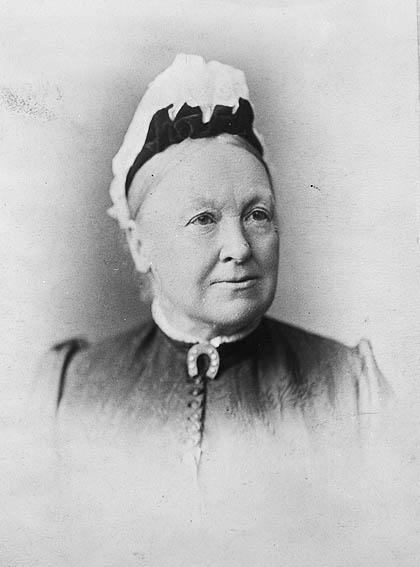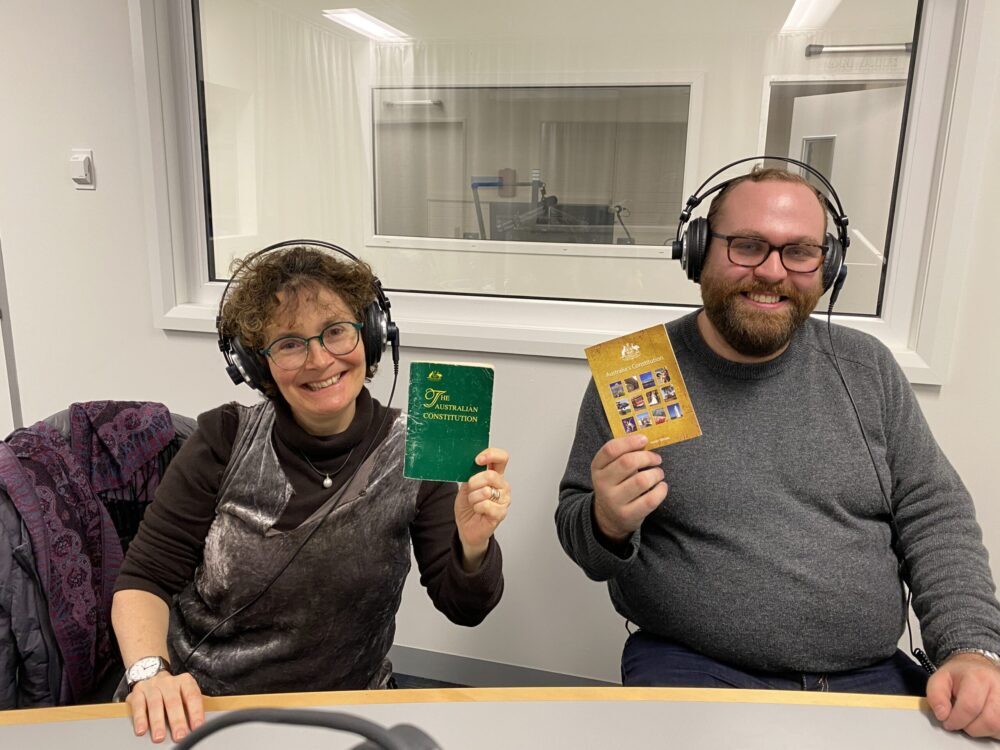The upcoming 2023 Constitutional Referendum on enshrining a First Nations Voice in the Australian constitution seeks a change to a document drafted by white male colonial politicians through a series of constitutional conventions in the 1890s. What in many ways is an inspired amendment to a document stranded in antiquated notions of white Australia and colonial privilege has become something other — a free-for-all about a document few have read and fewer understand.
This scrapping about a document shrouded in ignorance, easy to misrepresent and a source of such confusion and partisan mischief-making is one of the many reasons my colleague James Blackwell and I developed an 8-part podcast series, It’s not just the vibe, It’s the Constitution to help people understand what our Constitution actually has in it – and why we are being asked to change it.
In all of this, history is important and perhaps none more seminal and enlightening than the struggle women’s voices have had to be heard as they move from the constitutional fringes of our governance to something more approaching a mainstream consensus, although still with a long way to go.
At the time of drafting the Constitution there were many absent voices — female and indigenous voices led a long line of exclusions and with telling results.
They were unrepresented as delegates in the 1890s Constitutional Conventions and their voices and votes largely didn’t count when the colonies bounded together into what we now call the Commonwealth of Australia.
There was a spark of inspiration in South Australia where by 1894 women had successfully campaigned for the right to vote and to be members of the Parliament. This left an imprint on the Australian Constitution as the drafters scrambled to fit the anomaly of female suffrage in one state into a document covering a unified nation.
Women outside of South Australia, of course, wanted the vote and went to great lengths to get it. In Victoria in 1891 they gathered the Monster Petition, 260 metres in length with 30,000 signatures and the largest known petition of the 19th Century. It petitioned for a women’s vote but they were unsuccessful and women didn’t get to vote in Victorian elections until 1908.
Jumping back across the border, female suffrage in South Australia provided the legislative opening for the remarkable Catherine Helen Spence to run as the first women federal political candidate in Australia. Nominating to be a member of the 1897 Constitutional Convention drafting the Constitution held in her hometown of Adelaide, she was identified as one of the ten best ‘men’ in the running. The accolade was not enough to get her elected although her legacy of active citizenship paved the way for those following in her footsteps. And, hugely significant, women voting in South Australia were able to convince their representatives to guarantee women who had the vote that their vote would continue — Section 41 figures in the Constitution as a result.
There are residues of South Australian female suffrage too in Section 128 which sets out the machinery for changing the Constitution. We are hearing a lot about this section in the run up to the Voice Referendum. The proposed change must be approved by a ‘double majority’. There needs to be a majority of voters in favour of change throughout Australia (and voters in the ACT and NT have only been counted since 1977 and, a majority of electors in a majority of the states (i.e. at least four out of six states have to vote yes — the territories don’t count in that part).

Portrait of Catherine Helen Spence in the 1890s. Picture: Public domain/Wikimedia Commons
The wording of that section also uncovers the struggle for suffrage by women in the 1890s. The framers realised that in those states where women did have the right to vote — votes guaranteed to continue by section 41 — those states would garner more votes and that might skew the result. Wouldn’t that be unfair to those states that had not yet given women the right to vote?
At this point the convention debates record a bizarre discussion about whether women should put their votes in on pink ballot forms and men in blue! In the end, they determined another way, as seen in the words of the third paragraph of section 128. Until universal suffrage was achieved, ‘only one-half the electors voting for and against the proposed law shall be counted in any State in which adult suffrage prevails.’
As it turned out, this protection was never used because the Commonwealth Franchise Act 1902 granted Australian women the right to vote and to stand in federal elections, and the first referendum was held in 1906. But the Commonwealth Franchise Act 1902 also specifically disqualified ‘natives of Australia, Asia, Africa and the Pacific Islands (except New Zealand Māori)’ from voting in federal elections, unless they were entitled under section 41 of the constitution. It was not until 1962 that Indigenous Australians were included in the Commonwealth Electoral Act and included as voters in Australian federal elections.
Growing knowledge of indigenous exclusion and the constitutional forms it has taken may help clarify the importance of the “yes” case without overblowing its claims. The exclusion of indigenous Australians and the history of discrimination against them is certainly relevant to this year’s proposed change to the Constitution.
The proposed section 129 of the Constitution, will recognise ‘Aboriginal and Torres Strait Islander peoples as the First Peoples of Australia’, and set up ‘a body, to be called the Aboriginal and Torres Strait Islander Voice’; which will ‘may make representations to the Parliament and the Executive Government of the Commonwealth on matters relating to Aboriginal and Torres Strait Islander peoples’. The section also guarantees that ‘Parliament shall, subject to this Constitution, have power to make laws’ about the ‘composition, functions, powers and procedures’ of the Voice.
In all this, knowing what is in the Constitution, and the history behind it, is key to understanding this year’s referendum. In order to change something, you really need to know what is in it in the first place. And in knowing something about the constitution and its history, you may unearth inspirational stories of what others have done before you and what is at stake. For example, people voting in this year’s referendum may well be inspired by the women of the 1890s and there unremitting struggle for female suffrage. They are an edifying example of the importance of active citizenship.
With that I encourage you to tune into our 8-part podcast series, It’s not just the vibe, It’s the Constitution available on all podcast platforms to help and inspire you when you come to vote in this year’s referendum!
Kim Rubenstein is a Professor in the Faculty of Business Government and Law at the University of Canberra, which has supported the production of the new podcast series It’s not just the vibe, It’s the Constitution. She is a Fellow of the Australian Academy of Law and the Academy of Social Sciences in Australia.





